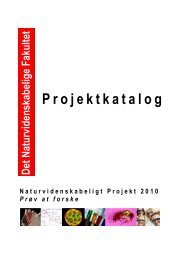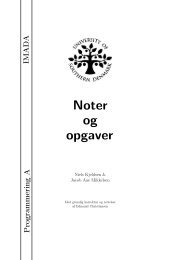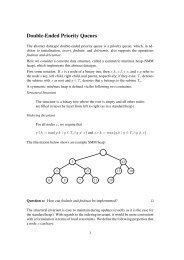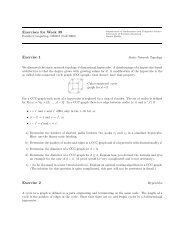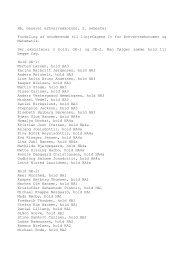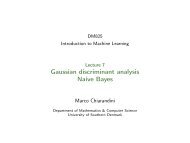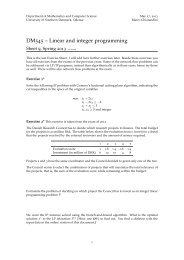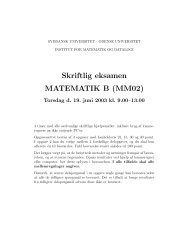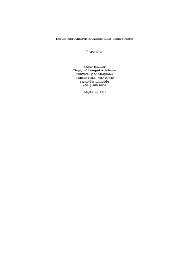Exercises for Week 41 Exercise 1 Exercise 2 Exercise 3
Exercises for Week 41 Exercise 1 Exercise 2 Exercise 3
Exercises for Week 41 Exercise 1 Exercise 2 Exercise 3
Create successful ePaper yourself
Turn your PDF publications into a flip-book with our unique Google optimized e-Paper software.
a) Assume that another message can be sent from Psource as soon as the previous message has reached the next node<br />
in the path.<br />
b) Assume that another message can be sent from Psource only after the previous message has reached P destination .<br />
For each case, comment on the value of this expression as the value of k varies between 1 and m. Also, what is the optimal<br />
value of k if t s is very large, or if t s = 0?<br />
<strong>Exercise</strong> 4<br />
Task Dependency Graph<br />
A =<br />
<br />
<br />
<br />
<br />
<br />
<br />
<br />
<br />
<br />
<br />
<br />
<br />
B =<br />
<br />
<br />
<br />
<br />
<br />
<br />
<br />
<br />
<br />
Given are the two sparse matrices A and B. Consider the problem of sparse matrix-matrix multiplication. A dot<br />
corresponds to a non-zero entry. The computation is decomposed into 8 tasks. Let task i the owner of row A[i, ∗] and of<br />
row B[i, ∗]. Task i has to compute row i of the result C = A · B.<br />
a) Draw the task interaction graph using directed edges. Draw an edge from task T i to task T j , if T i requires data from<br />
T j .<br />
b) Suppose that task i owns column i of matrix B instead of row i <strong>for</strong> the computation. Draw the task-interaction<br />
graph <strong>for</strong> this case.<br />
<strong>Exercise</strong> 5<br />
⎛<br />
⎝<br />
⎞<br />
A 1,1 A 1,2 A 1,3<br />
A 2,1 A 2,2 A 2,3<br />
⎠ →<br />
A 3,1 A 3,2 A 3,3<br />
⎛<br />
⎞ ⎛<br />
L 1,1 0 0<br />
⎝ L 2,1 L 2,2 0 ⎠. ⎝<br />
L 3,1 L 3,2 L 3,3<br />
⎞<br />
U 1,1 U 1,2 U 1,3<br />
0 U 2,2 U 2,3<br />
⎠<br />
0 0 U 3,3<br />
LU factorization<br />
1: A 1,1 → L 1,1 U 1,1 6: A 2,2 = A 2,2 − L 2,1 U 1,2 11: L 3,2 = A 3,2 U −1<br />
2,2<br />
2: L 2,1 = A 2,1 U −1<br />
1,1<br />
7: A 3,2 = A 3,2 − L 3,1 U 1,2 12: U 2,3 = L −1<br />
2,2 A 2,3<br />
3: L 3,1 = A 3,1 U −1<br />
1,1<br />
8: A 2,3 = A 2,3 − L 2,1 U 1,3 13: A 3,3 = A 3,3 − L 3,2 U 2,3<br />
4: U 1,2 = L −1<br />
1,1 A 1,2 9: A 3,3 = A 3,3 − L 3,1 U 1,3 14: A 3,3 → L 3,3 U 3,3<br />
5: U 1,3 = L −1<br />
1,1 A 1,3 10: A 2,2 → L 2,2 U 2,2<br />
Given is the decomposition of the LU factorization into 14 tasks. (We assume that each of the 14 tasks requires the same<br />
unit amount of work).<br />
a) Draw the task dependency graph.<br />
b) Determine all critical paths.<br />
c) Determine the average and the maximal degree of concurrency.<br />
d) Describe/draw an efficient mapping of the task-dependency graph of the decomposition onto three processes.<br />
e) Describe/draw an efficient mapping of the task-dependency graph of the decomposition onto four processes.<br />
f) Which of the both mappings solves the problem faster?<br />
g) What is the maximal speedup that can be achieved and how many processes are necessary <strong>for</strong> that speedup? (to be<br />
discussed next quarter)




